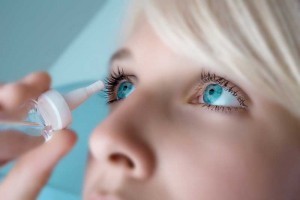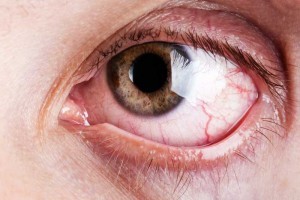The Debate Over Artificial Tears Versus Eye Drops.
Although most people assume that eye drops are all the same, brands vary in terms of how they affect the eye, or relieve symptoms. When choosing the right eye drop for your irritated eyes, it is important to understand the background behind these products, and the different types available. Whether you have red eyes or need more moisture, there are several differences between the top eye drops that are available.
Redness
Visine is a household brand of eye drops known as vasoconstrictor medication. Vein constriction reduces the appearance of redness for whiter eyes to appear less irritated. The redness is alleviated by reduced blood flow ( i.e. constricted flow) in the eyes. Capillaries work to bring oxygen and nourishment the eyes, but can be interrupted with vein constrictors. This can choke the cells due to a lack of oxygen that is available.
If you find yourself relying on Visine to reduce redness of the eyes, medical professionals recommend seeing an ophthalmologist if you have persistent redness or irritation in the eyes, which can indicate an underlying cause.
Vein constrictor drops can be harmful and are not recommended for everyday use. These drops contain phenylephrine, and, ultimately lack therapeutic value. It’s easier to find the cause of the redness rather than attempt to cover up the symptoms when they occur.
If the drops are used for several days, it can cause the underlying problem to increase in severity. This can also cause rebound redness and vascular fragility that is difficult to treat.
This type of drop does not provide moisture to the ocular surface of the eye. Harsh preservatives can increase symptoms. The most common preservative that is used in these eye drops is benzalkonium chloride (BAK), which is known to cause bacteria to multiply leading to damaged ocular tissues.
Dryness
Those who want to improve dry eye should always rely on artificial tear products instead of vasoconstrictors.
Although there is debate over the use of preservatives in artificial tears, there are preservative-free options available. Medical professionals recommend using Refresh, Systane, Soothe, and TheraTears for those who are sensitive to preservatives.
These brands allow the eyes to retain moisture, which will reduce redness from dryness.
Using artificial tears that have lower osmolarity can also prove to be beneficial to the ocular surface. Tears that contain osmoprotectants are taken up by cells and protect cells from stress activation.
Artificial tear eye drops need to be used, on average, for one to two months before determining if they benefit the eyes.
The Best Eye Drops For You
Although artificial tears are a better choice when it comes to choosing the right eye drops to use, use of eye drops should be supervised by a medical professional. The product should work to relieve the symptoms without having a dependency on the artificial tears just to have moisturized eyes.
Prescription brands like Restasis can be prescribed for chronic dry eyes. Again, prescription drops must be prescribed by a medical doctor. These eye drops allow the eye to begin to produce natural tears again for restored moisture.
If you recently undergo laser eye surgery, it is vital that you pay attention to the eye drops your eye surgeon instructs you to use. Accidentally using a vein constrictor in lieu of artificial tears is a danger to your eyes’ healthy recovery from LASIK. That being said, not everyone feels dryness after their LASIK procedure.
In fact, there are a lot of myths out there about LASIK. Find out more about some rumors that keep most people from having their vision corrected by LASIK or PRK in our eMyth eBook free to download now!



